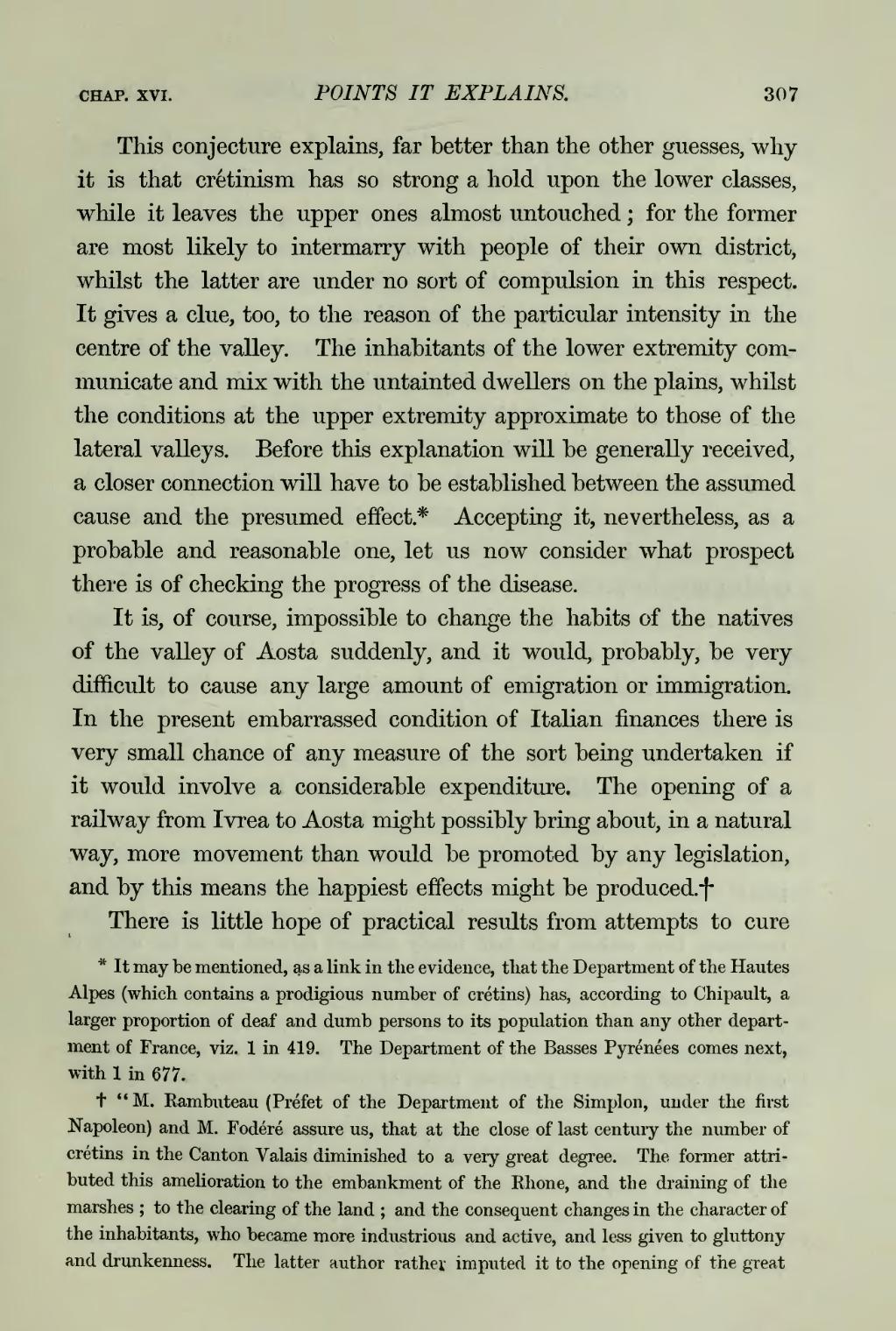This conjecture explains, far better than the other guesses, why it is that crétinism has so strong a hold upon the lower classes, while it leaves the upper ones almost untouched; for the former are most likely to intermarry with people of their own district, whilst the latter are under no sort of compulsion in this respect. It gives a clue, too, to the reason of the particular intensity in the centre of the valley. The inhabitants of the lower extremity communicate and mix with the untainted dwellers on the plains, whilst the conditions at the upper extremity approximate to those of the lateral valleys. Before this explanation will be generally received, a closer connection will have to be established between the assumed cause and the presumed effect.[1] Accepting it, nevertheless, as a probable and reasonable one, let us now consider what prospect there is of checking the progress of the disease.
It is, of course, impossible to change the habits of the natives of the valley of Aosta suddenly, and it would, probably, be very difficult to cause any large amount of emigration or immigration. In the present embarrassed condition of Italian finances there is very small chance of any measure of the sort being undertaken if it would involve a considerable expenditure. The opening of a railway from Ivrea to Aosta might possibly bring about, in a natural way, more movement than would be promoted by any legislation, and by this means the happiest effects might be produced.[2]
There is little hope of practical results from attempts to cure
- ↑ It may be mentioned, as a link in the evidence, that the Department of the Hautes Alpes (which contains a prodigious number of crétins) has, according to Chipault, a larger proportion of deaf and dumb persons to its population than any other department of France, viz. 1 in 419. The Department of the Basses Pyrenees comes next, with 1 in 677.
- ↑ "M. Rambuteau (Prefet of the Department of the Simplon, under the first Napoleon) and M. Fodere assure us, that at the close of last century the number of crétins in the Canton Valais diminished to a very great degree. The former attributed this amelioration to the embankment of the Rhone, and the draining of the marshes; to the clearing of the land; and the consequent changes in the character of the inhabitants, who became more industrious and active, and less given to gluttony and drunkenness. The latter author rather imputed it to the opening of the great
